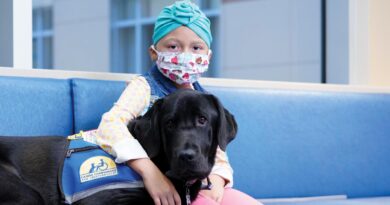We are in the midst of transformation …
Published on September 9th, 2014 by user.
We are in the midst of transformation—reinventing models for the delivery of health care across the continuum. As longtime providers of health care for children and adolescents, we have a history of focus on continuum of care, particularly as we engage with our community pediatricians who serve as the ‘medical home’ for our patients. These are actually cornerstones of pediatric medical and surgical care.
The National Institutes of Health defines ‘continuum of care’ as ‘an integrated system of care that guides the patient over time through a comprehensive array of health services.’ Over many decades, we have built both clinical and research multidisciplinary programs to do just this. As we consider entry points into our system of health care, we think of birth, emergencies and chronic conditions requiring specialty care to name a few. As we look at transforming our delivery models, we have furthered the way we care for our patients and families beyond our hospital setting and connecting back to our community pediatrician partners.
In this issue, you will read about several of our initiatives highlighting this continuum of care and several unique partnerships.
- Our Neonatal Intensive Care Unit (NICU) is one of the largest in the country, yet each critically ill infant begins a journey toward discharge that is individualized and multidisciplinary. Part of that care plan is thinking about the needs following discharge—both assessment and therapies. The Neonatal Follow-Up Program is one example of a transition program that provides infants and families with personalized care plans, including specialized music therapy classes, that bridge the care from NICU to outpatient, from hospital to outpatient care.
- Our Emergency Department begins care during an acute episode or need but works in collaboration with our subspecialists and community pediatricians to ensure a smooth transition following emergency care. In the past year, our specialists have partnered with our community providers to create best-practice care pathways that start in the emergency room but extend back to the pediatrician’s office.
- Finally, some disease management benefits from a concentration of resources to create a ‘medical home.’ We provide an update on our Center for Excellence in Sickle Cell Disease, a program built on community partnerships to provide care for children and families with sickle cell disease and asthma.
Our next decade of caring for children promises to be exciting. We anticipate continued growth of programs and greater accessibility as we bring services to children and families in their communities. We continue to build upon the long-standing partnership with our community pediatricians as we care for children across the continuum of health needs.
Even as we transform, we build upon decades of commitment to specialized medical and surgical services for children, education of the next generation of pediatricians and specialists, and discovery of better ways to prevent and treat pediatric disease. As we continue to plan for the future, we are grateful for the support of our faculty, staff, community and of course, our patients and families. The stories here reflect their hope in our services and our ever-present dedication to them.
Sincerely,
Luke Gregory, FACHE
Chief executive officer
Meg Rush, M.D.
Chief of staff and executive medical director
John W. Brock III, M.D.
Surgeon-in-chief, director of the Division of Pediatric Urology and Monroe Carell Jr. Professor
Steven Webber, MBChB, MRCP
Pediatrician-in-chief, chair of the Department of Pediatrics and James C. Overall Professor

